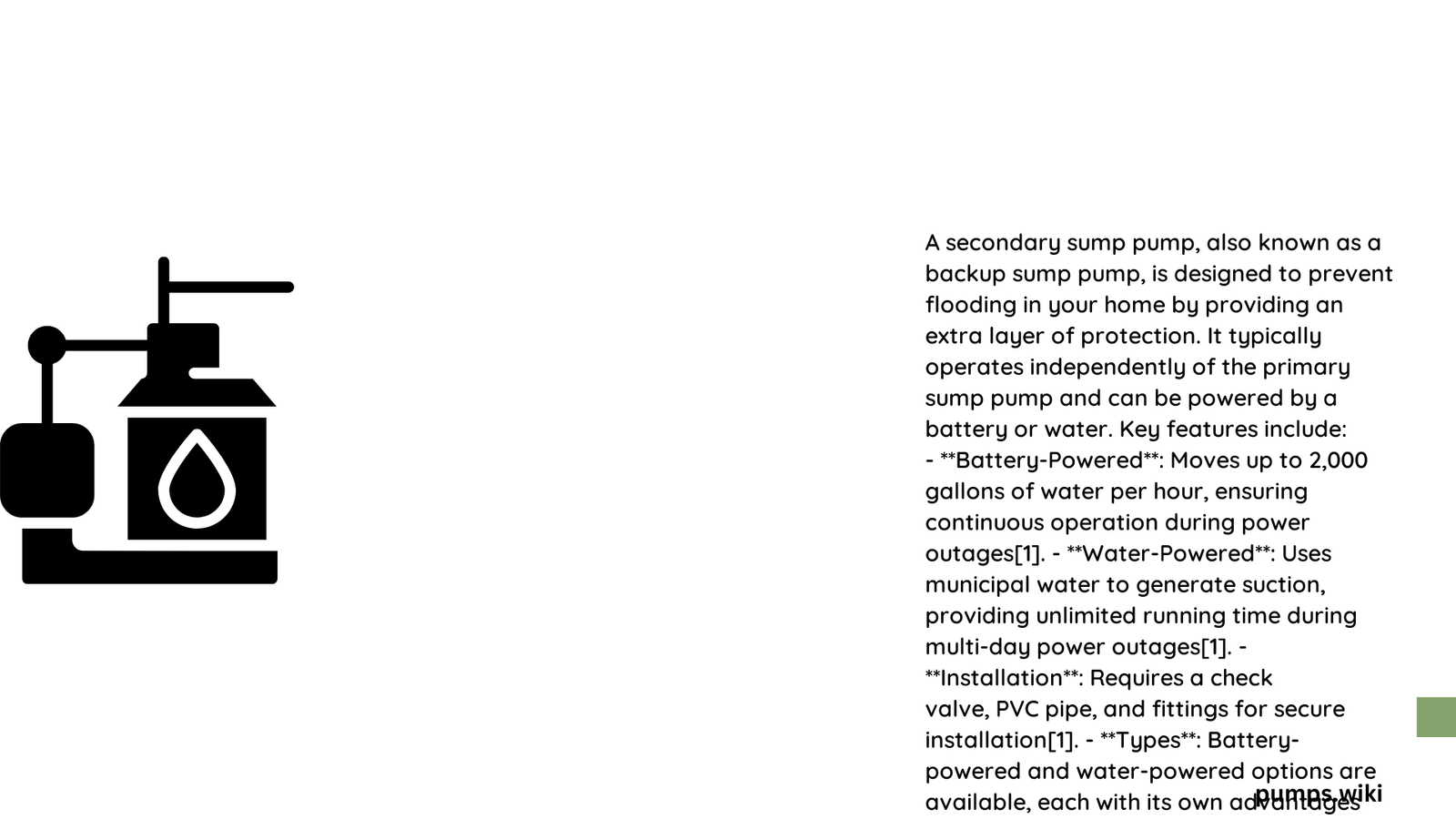A secondary sump pump serves as a critical backup system designed to protect homes from catastrophic water damage during primary pump failures or extreme flooding scenarios. These specialized systems activate when primary pumps become overwhelmed, providing an essential layer of defense against basement water intrusion, power outages, and mechanical breakdowns that could lead to significant property damage.
What is a Secondary Sump Pump?
A secondary sump pump is a backup water removal system installed alongside the primary pump in a basement or crawl space. Unlike standard primary pumps, these backup units are engineered to activate during critical moments when the main pump cannot handle water volume or experiences mechanical failure.
Why Do Homeowners Need a Secondary Sump Pump?
| Scenario | Risk Level | Potential Damage |
|---|---|---|
| Power Outage | High | $20,000 – $100,000 |
| Primary Pump Failure | Critical | $30,000 – $150,000 |
| Extreme Weather | Severe | $50,000 – $250,000 |
Key Components of a Secondary Sump Pump System

Battery Backup Mechanism
- 12V DC rechargeable battery
- Automatic activation during power interruptions
- Typically provides 5-7 hours of continuous operation
Alarm and Monitoring Features
- Visual status indicators
- Audible warning systems
- Real-time performance tracking
Top Secondary Sump Pump Selection Criteria
Performance Metrics to Consider
- Horsepower Rating
- 1/3 HP to 1/2 HP recommended
-
Higher capacity for larger basements
-
Pumping Capacity
- Minimum 2,000 gallons per hour
-
Vertical lift capability of 10-15 feet
-
Battery Reliability
- AGM (Absorbed Glass Mat) batteries preferred
- Minimum 7-year expected lifespan
Installation Best Practices
Preparation Steps
- Measure sump pit dimensions
- Verify electrical compatibility
- Gather necessary installation tools
- Confirm local building code requirements
Professional vs. DIY Installation
| Installation Type | Cost | Complexity | Recommended For |
|---|---|---|---|
| Professional | $300 – $800 | Low | Complex Setups |
| DIY | $100 – $300 | Moderate | Simple Configurations |
Maintenance Recommendations
Routine Inspection Checklist
- Battery charge level
- Float switch functionality
- Discharge pipe clearance
- Sediment accumulation
- Electrical connections
Common Troubleshooting Techniques
Potential Issues and Solutions
- Unexpected pump activation
- Reduced pumping efficiency
- Battery drainage
- Mechanical wear
Cost Considerations
Investment Breakdown
- Initial System Cost: $200 – $1,000
- Professional Installation: $300 – $800
- Annual Maintenance: $50 – $150
Recommended Secondary Sump Pump Models
- Zoeller Basement Sentry STBC301
- 1/2 HP primary pump
- 12V backup system
-
Comprehensive monitoring
-
Basement Watchdog Combo
- ⅓ HP primary pump
- 3,720 GPH flow rate
- Dual float switch technology
Final Recommendations
Investing in a high-quality secondary sump pump is crucial for comprehensive basement water management. Prioritize systems with robust battery backup, reliable monitoring features, and proven performance metrics.
